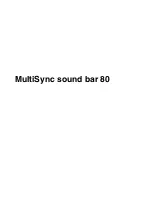
Ver 2.0
21
21
21
21
~ÄëçäìíÉ=ÑáÇÉäáíó
4 The Technology
The Genesis 1.1 comprises four columns: two midrange/tweeter
“wings” and two bass towers. Each module is 7 ½ feet tall (228cm),
and covered in fine rare-wood veneers or high-gloss painted finishes.
The dipole midrange/tweeter column houses a 6-foot line source
ribbon midrange, and twenty-six ribbon tweeters in a line-source array.
Each bass tower houses six 12” aluminum cone woofers, each woofer
servo-controlled with its own 500 watt bass amplifier housed in a six-
channel amplifier chassis.
The complete Genesis 1.1 system, consisting of the six separate
elements, weighs over 2,640 lbs (1,200kg).
4.1 Design Philosophy: Dipolar Line Source
Nothing has changed in theoretical acoustics since Lord Rayleigh’s
original book on acoustics published in 1877. There are still only two
proper ways for a loudspeaker to propagate sound in a room: a point
source and a line source. Anything else, or everything in between, is a
compromise.
In order for all frequencies of sound
from the loudspeaker to reach the
listener at exactly the same time, a
coherent wave front is important -
not just “time-alignment” of drivers.
The ideal is either an infinitely small
pulsating point or a pulsating line
with a size on the order of the room
dimension.
Obviously, an ideal line-source is
much easier to mechanize than the
ideal point source. The line-source (if
large enough), can approach the
ideal, and in doing so, provide
sufficient radiating area for
dynamically and spatially realistic sound reproduction.
The Genesis 1.1 is a near perfect line-source that is 7.5 feet tall
(nearly the room’s entire height). A line source has no vertical
dispersion at any frequency. Hence there is no sound bouncing from
either the floor or the ceiling. No deleterious interference from these
surfaces is created (as in virtually all other kinds of speakers).
John William Strutt Lord Rayleigh (1842 – 1919)







































